Mumbai’s Sassoon Docks turns into an open air art gallery
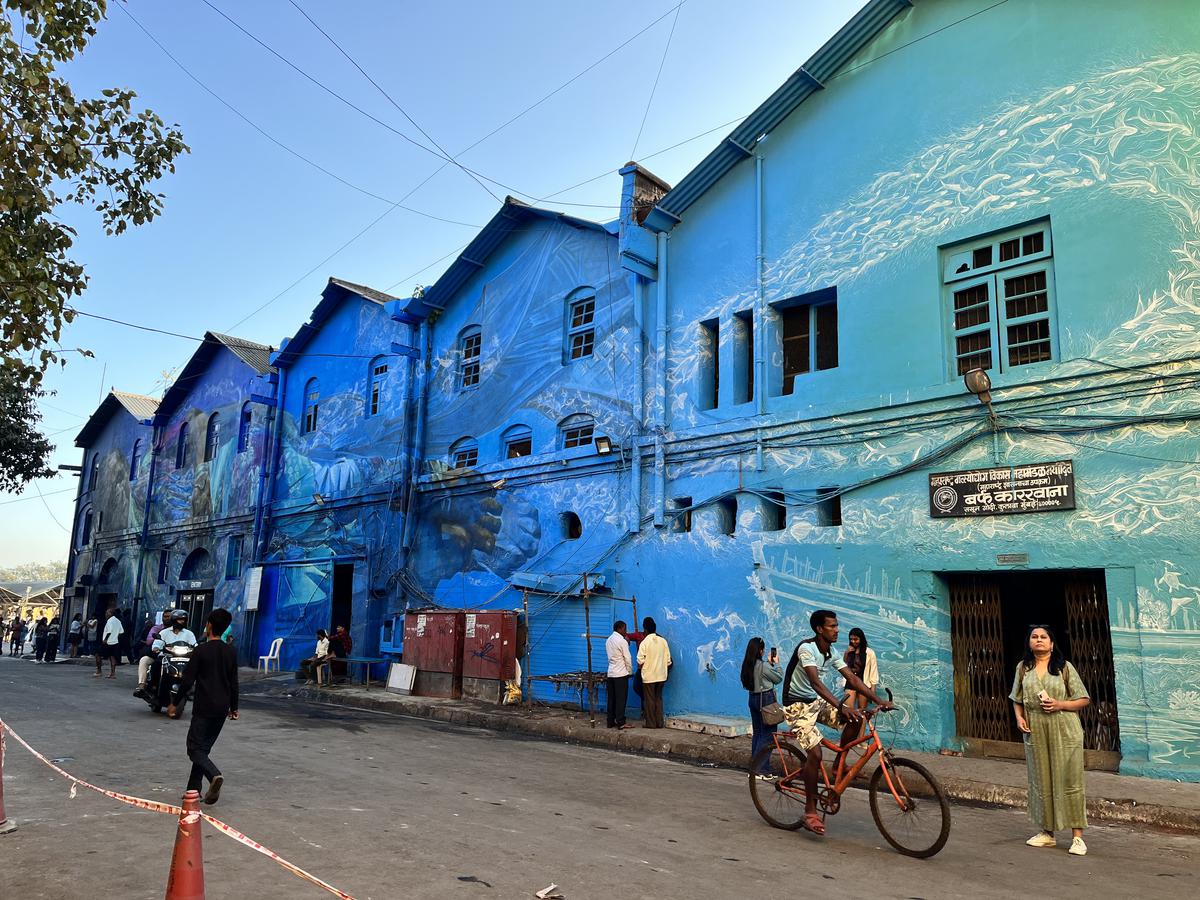
Sea life and humans
| Photo Credit:
Prabalika M Borah
This month, Mumbai is festooned with a fresh coat of colour, as it embraces buildings, scaffolding, tree trunks and walls. Continuing the celebrations of the 150th anniversary of the Mumbai Port Authority, the Mumbai Urban Art Festival (MUAF) has literally painted the town red, and also white, yellow, and green.
MUAF at the Sassoon docks is an art project that started in 2017 to revive the historic heritage of the 142-year-old docks. That year St+art India foundation, in association with Asian Paints and 30 artists from around the world gave the dock—home and lives of the Koli community, a complete makeover.
Like every year this year too the art project was about conservation and telling stories of the sea and its people. This year St+art India foundation and Asian Paints with its motto ‘Art for all’ also decided not to restrict art to the dock alone. Contemporary artist, artistic director of St+art India foundation Hanif Kureshi says “we want to reclaim the streets to create art for all. Everyone should be able to enjoy art in their everyday life. Which is why many artists, in fact anyone who feels like expressing themselves through art have joined us in paintings walls and streets of Mumbai.”
The festival — an initiative of Asian Paints and St+art India Foundation — includes the recent launch of the Asian Paints Art House at iconic Sassoon Docks. It houses three installations: one by artist Steve Messam (from the UK) and two more by Ayaz Basrai (Busride studio) from Pune.
Sassoon Docks is one of the oldest dock in Mumbai. It was built in 1875 by Sir Albert Abdulla David Sassoon, a Jewish merchant. It was Western India’s first ‘wet’ dock–one where ships can sail in regardless of the tide. Walking into this area is like stepping in a huge fish wholesale market. .

The art house at the entrance of Sassoon docks
Energy from debris
The Art House stands at the entrance of Sassoon Docks. On the first floor conical structures jut six metres out of the building. The installation is made with inflatable textiles, explains Steve, adding that he is demonstrating how air can air be a medium of art by spreading the material sideways. Steve uses the same material used bouncy castles to create his fabric art sculpture.
Steve’s installation portrays the co-existence of people. When asked why his structures do not point up towards the sky, but are instead parallel to the ground, he says, “upward isn’t the only direction. At times we need to spread out and reach out.”
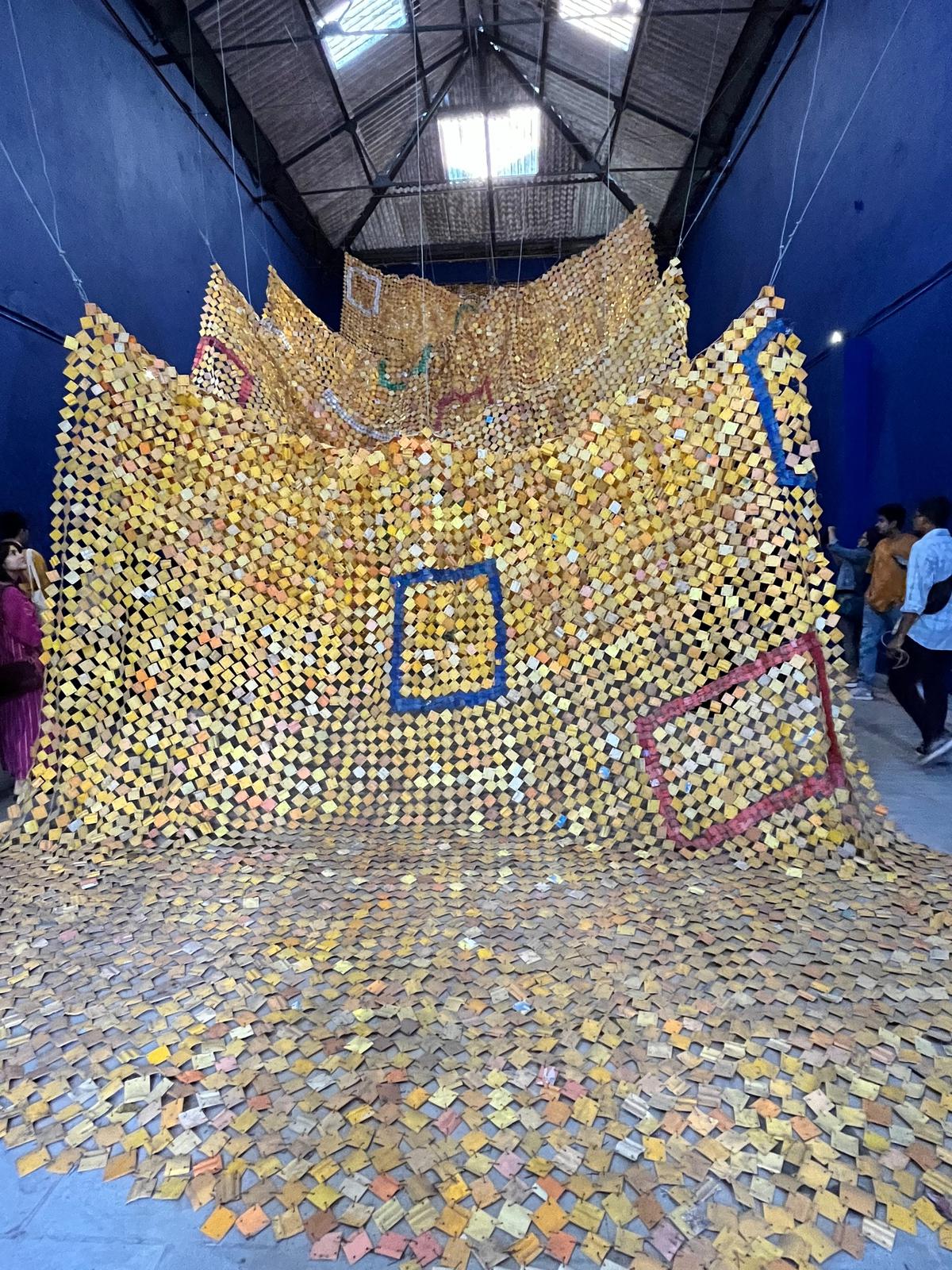
Serge’s Sea never dies
| Photo Credit:
Prabalika M Borah
The second art work at The Art House by Ayaz portrays a ‘home.’ Made of fibrewood, the installation shows creative living in modular design. It is dedicated to Mumbai’s living space where every inch is made to use to accommodate one’s belongings.
To create Currents, the third installation inside the art house, with paint and gum Ayaz has repurposed debris, fabric (retrieved burlap from the dock) and other bits and pieces found around the dock to create an energy vortex. The whirlpools of water in his art piece signifies water’s strong currents.
Faces in the crowd
Inside Sassoon Docks, artist Paola Delphin from Mexico balances on a crane as she adds the final touches to her work on a dilapidated building that is about 40 feet tall, unfazed by the fishy pungency of the dock. The black and white work titled Humanity, in the style of street art, shows the faces of several fisherwomen in the dockyard. Their faces reflect myriad emotions: patience, happiness and disappointment. Through her work the artist says she wants to narrate the stories of the people working at Sassoon docks.
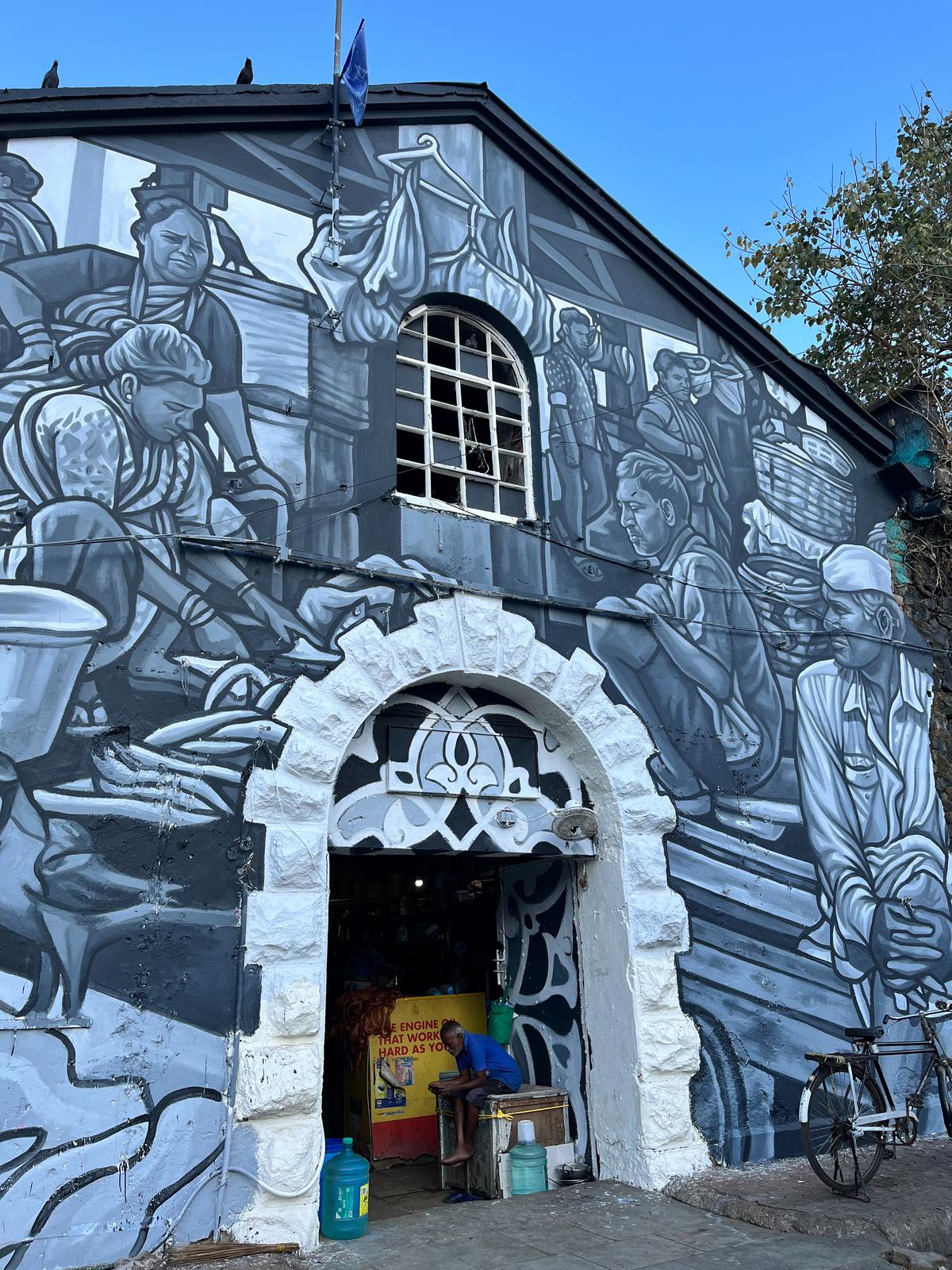
Humanity by Paola
| Photo Credit:
Prabalika M Borah
See the sea
The walls of the baraf karkhana (ice factory) another building on the dock has an untitled artwork created by 10 artists. It features hues of blue gradually blending into a green, almost mirroring the ocean. On them, in white, are fish of all sizes, turtles, aquatic plants, debris from boats, and nets. Swimming amongst them are plastic packets, bottles and garbage, telling the story of how aquatic animals are forced to live with what humans discard carelessly. Ironically, most onlookers just use it as a backdrop for selfies, and then walk away. Through this artwork the artists want to talk about not littering the sea.
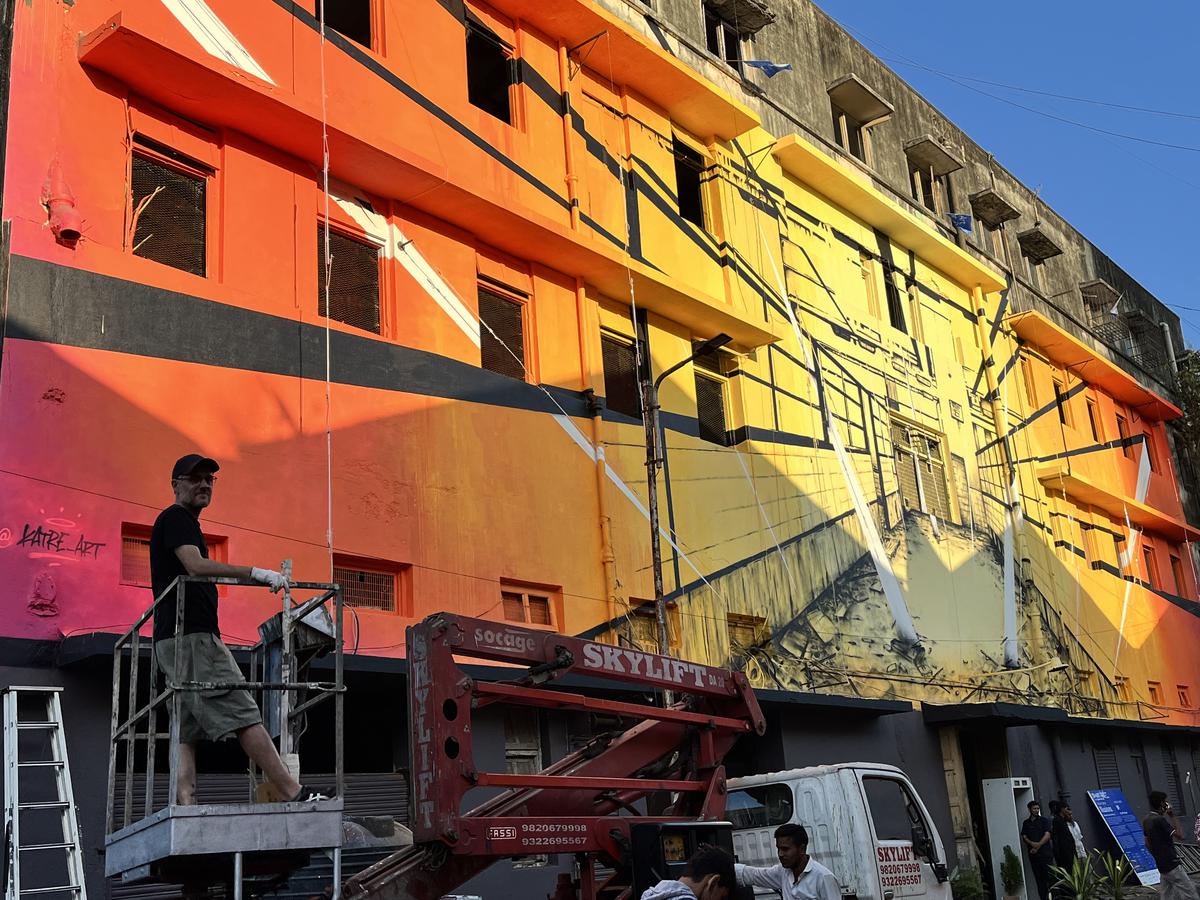
Antonim Katre and his work
| Photo Credit:
Prabalika M Borah
Opposite the baraf karkhana , Antonim Katre from Paris shakes his cans of paint, spraying colour on his horizontal artwork on a building. Creating the impression of entering a maze, the masked artist works with bright red, orange and yellow, then draws symmetrical panels over them in bold black paint. The work transports viewers into a seemingly never-ending corridor of a massive building. Inside the building is ‘Illusions’ put together by 10 artists. A playful series of works, this takes viewers on a a path from darkness to light, a transition from depth to surface.
Sea of plastic
Sea Never Dies by Serge Attukwei Clottey from Ghana is a part of an ongoing body of work called Afrogallonsim. Through this artwork, he explores the themes of environmental protection and social justice. Sergei — an installation, performance and sculpture artist — has used millions of identical plastic chips made from oil cans to create what looks like a larger-than-life fishnet. The plastic chips are held together by copper wires to form a net measuring several hundred metres.
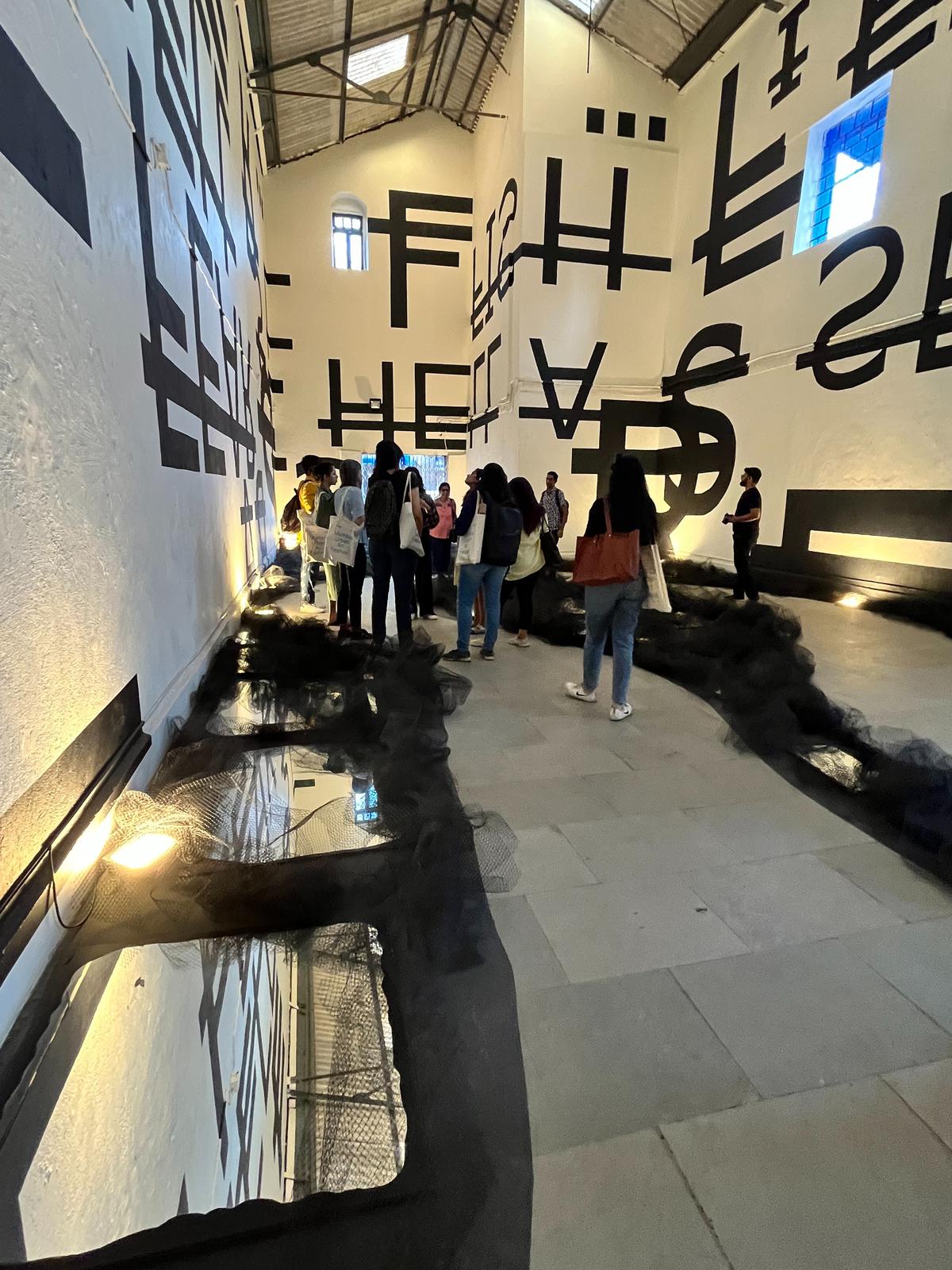
Rero’s work
Beyond Sergei’s installation, lies French artist Rero’s untitled work comprising mirrors, black nets and words painted in mirror images (black lettering on a white wall in the artist’s signature strike-through typographic style). The installation is all about wordplay, reflection juxtaposes mirrors and fishnets that interfere with the reading, as the viewers try to disentangle the words ‘sell fish’, ‘selfish’, ‘shellfish’ and ‘no selfie zone’.
The installation at Sassoon Docks, Mumbai, is up for viewing until February 22.
The writer was at The Mumbai Urban Art Festival at the invitation of Asian Paints
For all the latest Entertainment News Click Here
For the latest news and updates, follow us on Google News.
